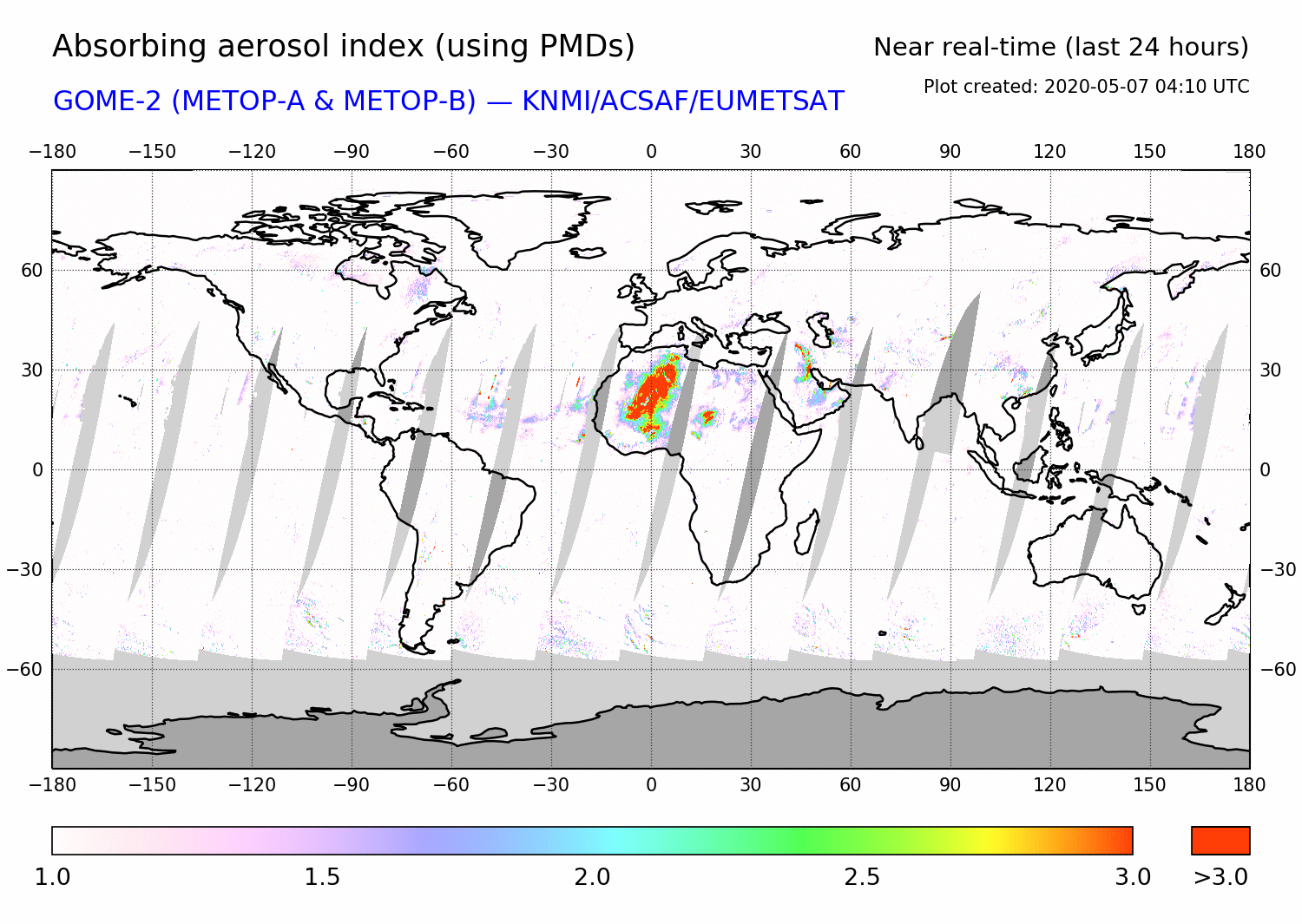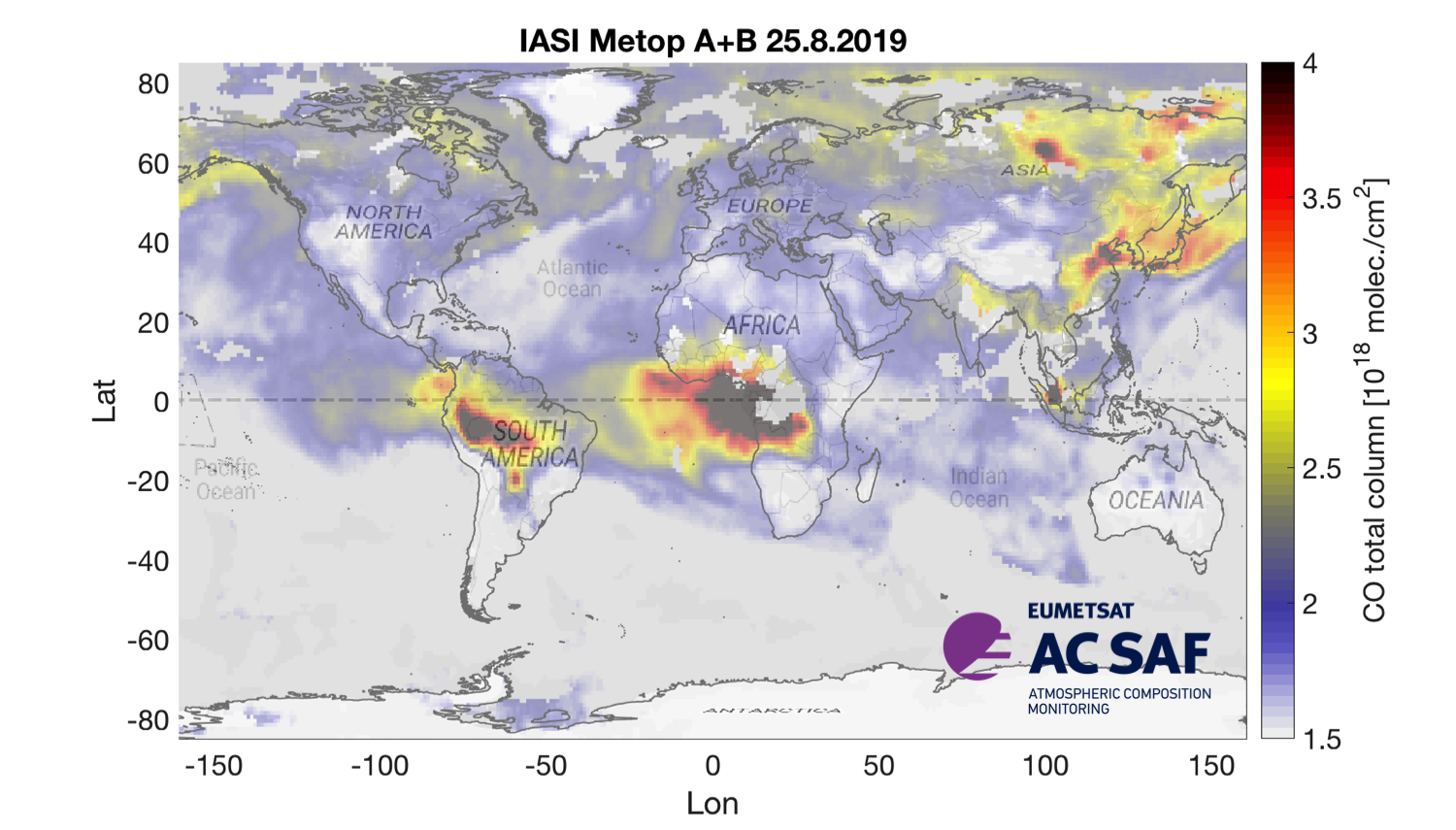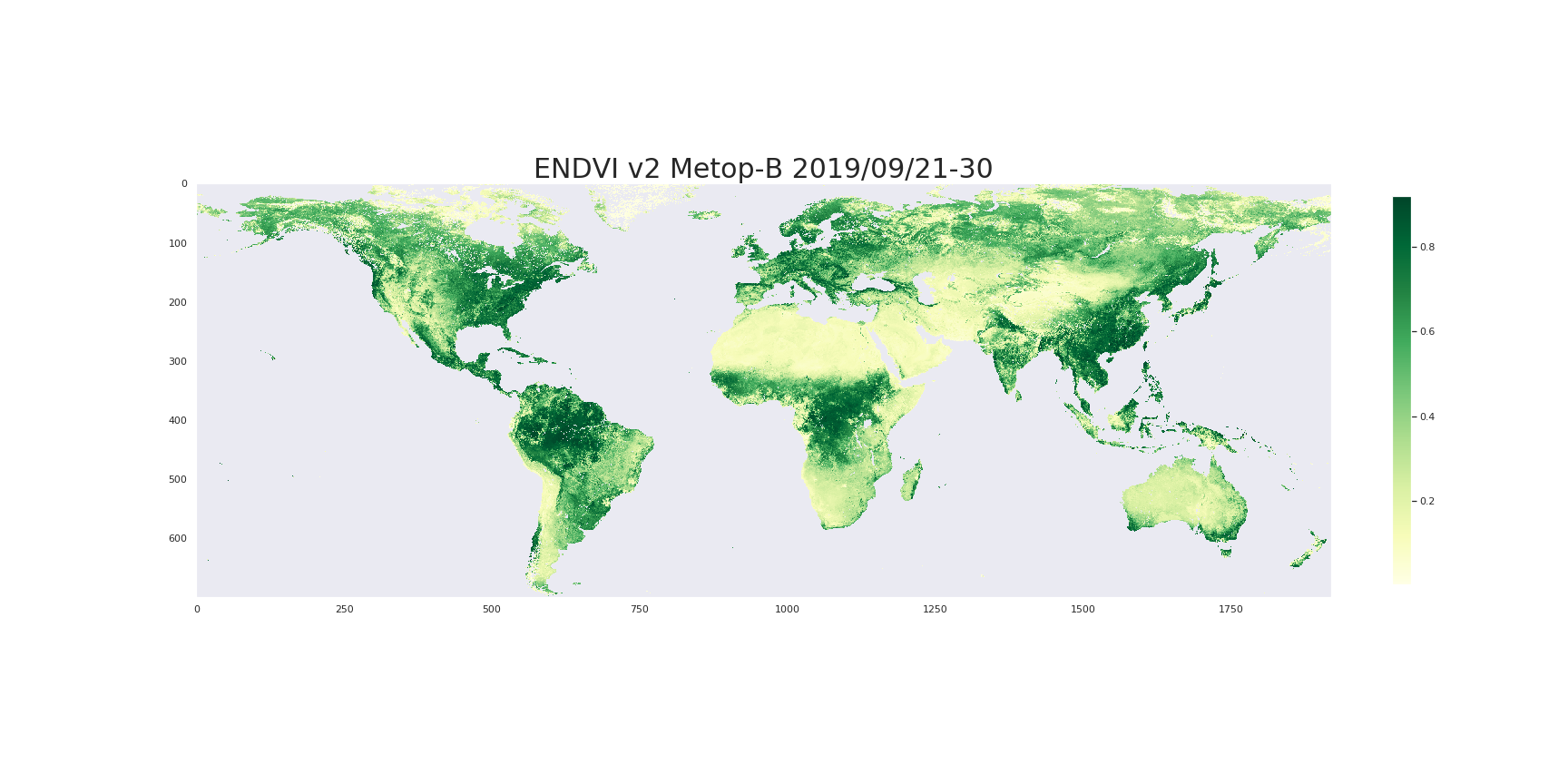In addition to its core marine and continental objectives, the
Copernicus Sea and Land Surface Temperature Radiometer (SLSTR), onboard
the Sentinel-3 A and B satellites, detects and monitors the immediate
threats of any 'burning' events over an area size of 1 km2.
Commonly gathered under the term of hotspots, these are not only fires
over continents, but also flames from persistent land and ocean gas
flares, and active erupting volcanoes.
The Copernicus Sentinel-3 (S3) Near Real Time (NRT) FRP product, implemented by EUMETSAT,
monitors in a short time the location and associated threat
(i.e. total radiative power) of all land and ocean hotspots detectable
on our planet. It is applicable to agricultural burning, wildfires, deforestation, tropical peatland fires,
industrial gas flares, and volcanoes, all emit radiative signatures
with a high seasonal and geographical variability.
![Sentinel-3 A SLSTR - NRT FRP MWIR [MW] - 05.12.2019 (night-time)](https://classroom.eumetsat.int/pluginfile.php/32360/course/section/3834/20191205_s3a_slstr_frp_mwir_gridded_night_d_map_roi_01.png)
The EUMETSAT deployment is based on the NRT FRP v2.0 processor. The current version of the NRT S3 FRP product is considered as
'preliminary operational'. It is mainly applicable during nighttime. EUMETSAT is responsible for the generation and quality of the
Sentinel-3 NRT FRP product, as well as its long-term validation and
improvements, acting on behalf of the European Commission (EC).
The spectral wavelength at which the heating signal is maximal depends on the hot-spot temperature. Indeed, vegetation fire signals peak in the Medium Wave InfraRed (MWIR), between
3 and 5 µm, while hotter bodies, like industrial gas flares, may exhibit a higher
signal in the ShortWave InfraRed (SWIR), between 1.5 and 2.3 µm. Consequently, two FRP techniques are employed: one based on the Medium Wave InfraRed (MWIR) channels, at 3.7 um, one based on the Short Wave InfraRed (SWIR).
![Sentinel-3 A SLSTR - NRT FRP SWIR [MW] - 26.04.2020 (night-time) - Industry gas flares in Persian Gulf](https://classroom.eumetsat.int/pluginfile.php/32360/course/section/3834/20200426_s3a_slstr_frp_swirnosaa_gridded_night_d_map_roi_14.png)
One of the key users of this product is the Copernicus Atmosphere Monitoring Service (CAMS),
who is responsible for tracking the intensity and emissions of
wildfires around the world. EUMETSAT and CAMS have a long-standing
cooperation, with EUMETSAT having developed an operational Copernicus
data stream to CAMS and providing its satellite data and products in
order for them to provide accurate and timely air-quality forecasts
across the globe.
CAMS will assimilate the Sentinel-3 NRT FRP product, into their own air quality-forecasting model, the
data from which gets broadcast via Euronews and CNN International, in
order to clearly show society at large how air quality might impact
people’s day-to-day lives, so that they can make decisions on their
exposure to pollution more easily. CAMS, implemented by the European Centre for
Medium-Range Weather Forecasts (ECMWF) on behalf of the European
Commission, will use its Global Fire Assimilation System (GFAS) to
assimilate the NRT Copernicus S3 FRP product, in addition to currently
assimilated satellite FRP products, in order to provide global biomass
burning smoke emissions in a timely and effective manner. Currently,
GFAS assimilates FRP from MODIS space-borne sensors, from both Terra
(morning) and Aqua (afternoon) satellites. Both have been operated
beyond their nominal lifetime. Hence, GFAS is currently under
preparation to be able to ingest the NRT S3 FRP product soon. In the
future, NRT S3 FRP, combined with GFAS, will likely be the only source
of global information for fires and hotspots in the early morning and
evening.














![Sentinel-3 A SLSTR - NRT FRP MWIR [MW] - 05.12.2019 (night-time)](https://classroom.eumetsat.int/pluginfile.php/32360/course/section/3834/20191205_s3a_slstr_frp_mwir_gridded_night_d_map_roi_01.png)
![Sentinel-3 A SLSTR - NRT FRP SWIR [MW] - 26.04.2020 (night-time) - Industry gas flares in Persian Gulf](https://classroom.eumetsat.int/pluginfile.php/32360/course/section/3834/20200426_s3a_slstr_frp_swirnosaa_gridded_night_d_map_roi_14.png)